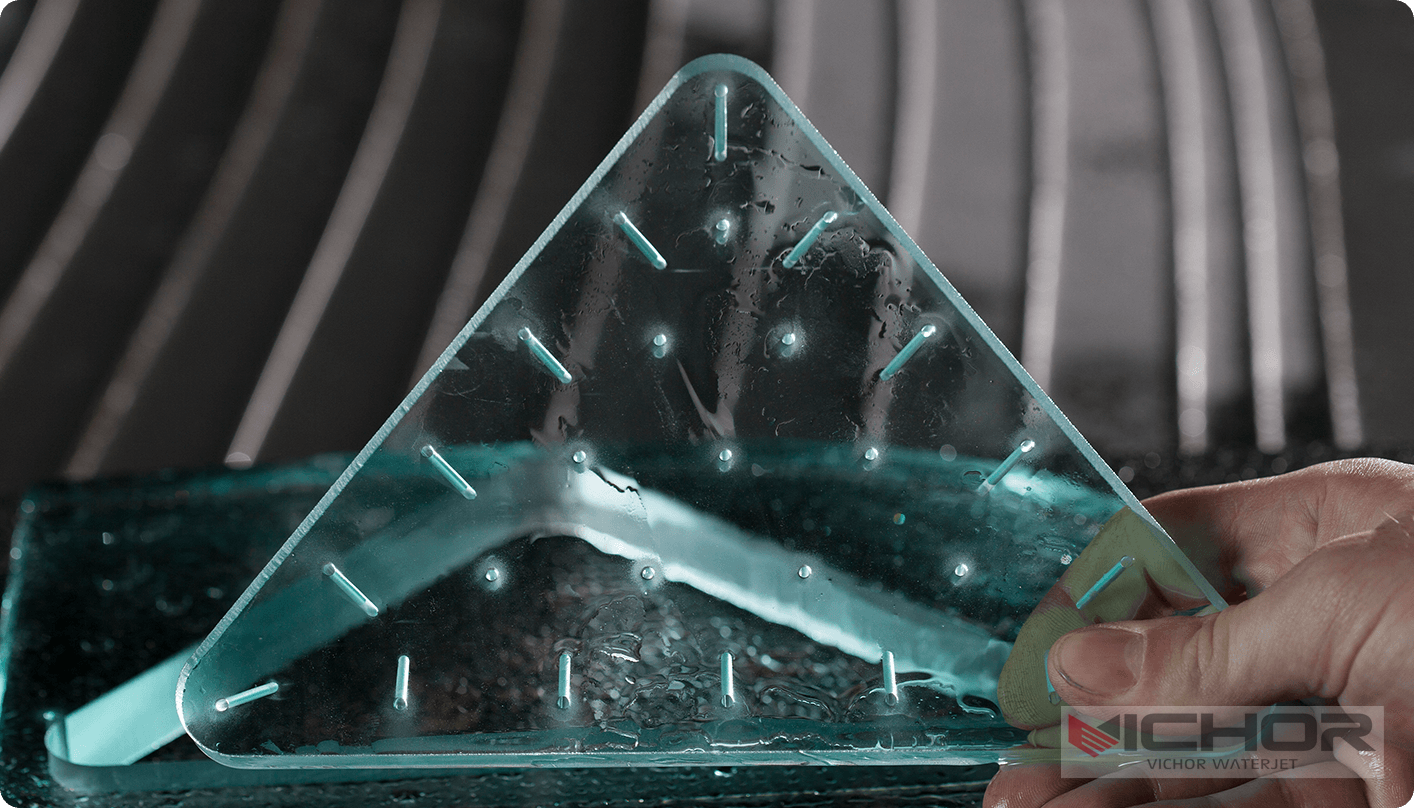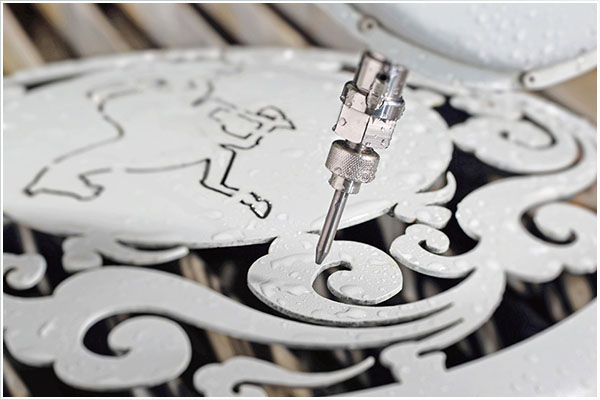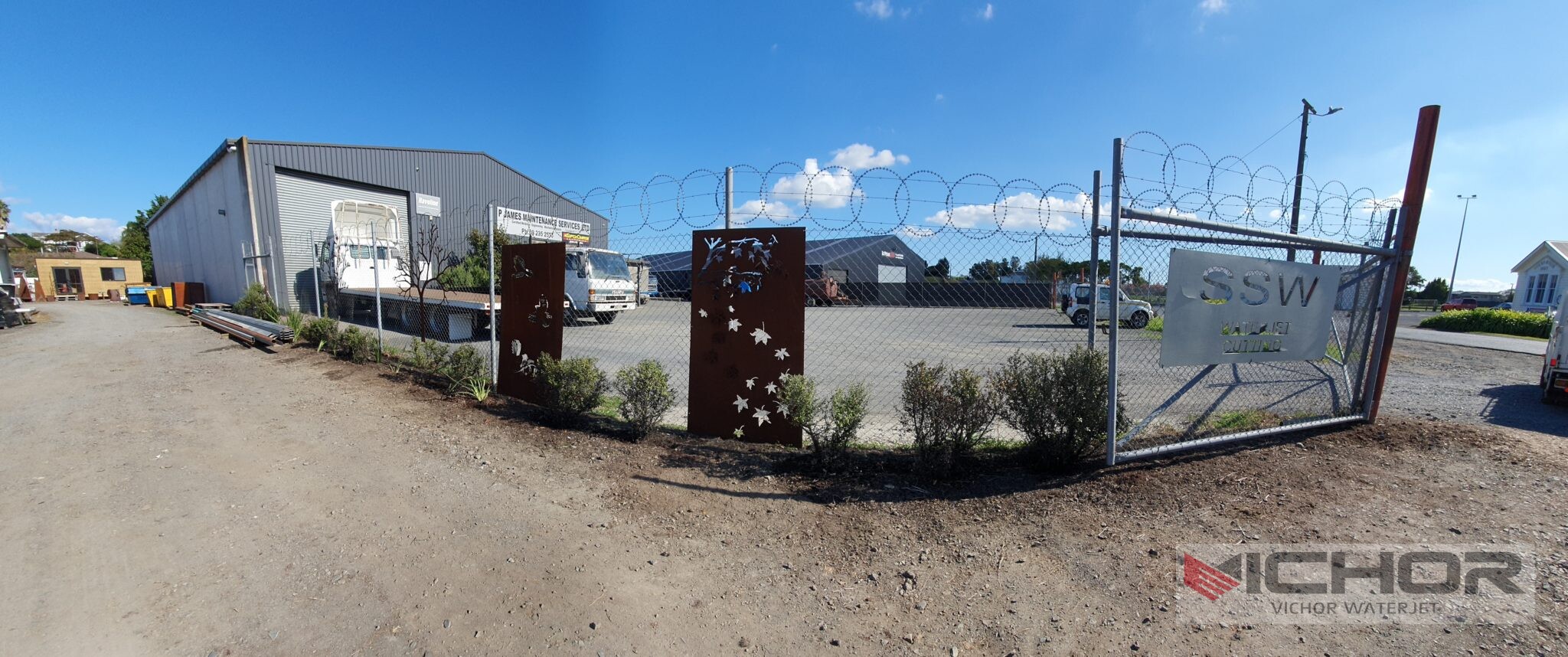
How Does Waterjet Cutting Work? Demystifying the Waterjet Cutting Process
Waterjet cutting stands as one of the most versatile and powerful manufacturing tools available today. But for those who haven’t witnessed it firsthand, the waterjet cutting process can seem almost like magic—a stream of water slicing through inches-thick metal with precision. How is this possible? This article pulls back the curtain to provide a clear, comprehensive explanation of the waterjet cutting process, from its basic principles to the common challenges operators face. Understanding this technology is key to leveraging its full potential for your fabrication and design projects.
The Core Principle: Erosion at Supersonic Speed
At its most fundamental level, the waterjet cutting process is controlled, hyper-accelerated erosion. The system takes water, pressurizes it to an extreme degree, and forces it through a tiny orifice, creating a coherent stream moving at velocities over twice the speed of sound. This stream possesses immense kinetic energy.
When this supersonic stream is directed at a material, it impacts a very small area with incredible force, straining and eroding the material’s surface. For soft materials like foam, rubber, or food products, this pure waterjet is sufficient to cut through impressive thicknesses. However, to cut harder materials like metal, stone, or composite, the stream needs extra cutting power. This is achieved by introducing a hard abrasive granule, typically garnet, into the stream just after the orifice. The water acts as an accelerator, carrying the abrasive particles and focusing them onto the material. These particles perform the majority of the micro-machining and erosion, enabling the waterjet cutting process to slice through tough materials with ease.
A Step-by-Step Walkthrough of the Waterjet Cutting Process
The journey from tap water to a finished precision part involves several precise stages. Here is a breakdown of the typical waterjet cutting process:
Design and Programming: The process begins with a CAD (Computer-Aided Design) file of the part to be cut. This digital blueprint is then converted into a set of machine instructions (G-code) using CAM (Computer-Aided Manufacturing) software. The software determines the cutting path, speed, and other parameters.
Water Preparation: Ordinary municipal water is not used directly. It first goes through a conditioning system, which includes a water softener and filters. This step is crucial to remove minerals and impurities that can damage the ultra-high-pressure components downstream.
Intensifier Pump: The heart of the system is the ultra-high-pressure pump. Most modern systems use an intensifier pump, which uses hydraulic power to pressurize the water. A small piston on the hydraulic side moves a large piston on the water side, amplifying the pressure. This process can generate pressures between 60,000 and 90,000 PSI (4,100 to 6,200 bar).
Delivery through High-Pressure Tubing: The pressurized water is then delivered to the cutting head via thick, specialized tubing designed to contain the extreme pressure safely.
The Cutting Head: Orifice and Mixing Tube: At the cutting head, the water first passes through a gemstone orifice (usually made of diamond or sapphire). This tiny hole, typically between 0.004″ and 0.016″ in diameter, is what transforms the high-pressure water into a supersonic stream.
For abrasive cutting, the stream then enters a mixing tube (also called a focus tube or nozzle). Here, a vacuum effect draws abrasive garnet from a separate hopper into the stream. The water and abrasive mix in the tube, creating a potent erosive jet.
Cutting the Material: The focused abrasive jet is directed onto the material, which is submerged in a tank of water or positioned just above it to reduce splash and noise. The machine’s CNC (Computer Numerical Control) system moves the cutting head along the programmed path, slicing the material with high accuracy.
Catcher Tank: The spent water, abrasive, and cut material particles (known as kerf) fall into a catcher tank located below the cutting surface. Here, the energy of the jet is safely dissipated, and the slurry settles or is filtered for abrasive recycling or disposal.
Key Advantages of the Waterjet Cutting Method
The waterjet cutting process offers a unique set of benefits that make it a preferred choice for many industries:
Cold Cutting: Unlike laser or plasma cutting, waterjet does not generate heat-affected zones (HAZ). This means the material’s inherent structure remains unchanged; there is no hardening, warping, or altering of temper in metals, which is critical for precision parts.
Material Versatility: It is the single most versatile cutting process. It can cut virtually any material, from soft foam and rubber to hard titanium, granite, glass, and composites. One machine can handle an entire project, streamlining production.
Omni-Directional Cutting: Waterjets can start cutting from the edge of a material or pierce through the middle and begin cutting. They can move in any direction, allowing for extremely intricate shapes and nested patterns to maximize material usage.
High Precision and Edge Quality: Modern CNC-controlled waterjets offer high positional accuracy and can produce complex parts with tight tolerances. The edge quality is typically very good, often requiring no secondary finishing.
Common Challenges and Problems in the Waterjet Cutting Process
Despite its many strengths, operators of the waterjet cutting process must manage several common issues to ensure optimal results.
Taper: This is one of the most frequent challenges. Taper occurs when the jet widens as it travels through the material, resulting in a cut that is not perfectly vertical. The top of the cut is slightly wider than the bottom. This is most noticeable in thicker materials. Modern systems combat this with dynamic head tilt (taper compensation) that angles the head slightly to produce a square edge.
Abrasive Feed Issues: Inconsistent or clogged abrasive feed is a common headache. Moisture can cause the garnet to clump in the line, leading to an intermittent flow. This results in an uneven cut that may not penetrate fully in sections. Proper abrasive storage and maintenance of the delivery system are essential.
Nozzle Wear: The orifice and mixing tube are consumable parts. The orifice, though incredibly hard, will eventually wear and enlarge from the abrasive water, losing pressure and cutting efficiency. The mixing tube wears into an oval shape, defocusing the jet. Regular inspection and replacement of these components are critical for maintaining cut quality.
Piercing Delamination: When piercing laminated materials like composites or layered metals, the high-pressure stream can force layers apart before it fully penetrates, causing delamination. Using a reduced pressure pierce cycle or drilling a starter hole can prevent this.
Slow Cutting Speeds on Thick Materials: While waterjets can cut very thick materials, they must do so slowly. The cutting speed for a 4-inch-thick piece of steel will be dramatically slower than for a 1/2-inch-thick piece. This is a natural trade-off between thickness, speed, and quality that must be factored into project planning.
Optimizing for Quality and Efficiency
Achieving the best results from the waterjet cutting process involves careful setup and parameter selection. Operators must choose the correct orifice and mixing tube size, abrasive flow rate, pressure, and cutting speed for each specific material and thickness. Using software that automatically suggests these parameters based on material libraries can greatly simplify this process. Furthermore, proper maintenance of the pump, cutting head, and abrasive delivery system is non-negotiable for consistent, high-quality cuts and the long-term health of the machine.
In conclusion, the waterjet cutting process is a remarkable fusion of simple natural forces and advanced technology. By understanding its principles, stages, advantages, and common pitfalls, manufacturers can harness this powerful tool to unlock new possibilities in design and fabrication, creating precise parts in almost any material without the limiting effects of heat.
continue reading




